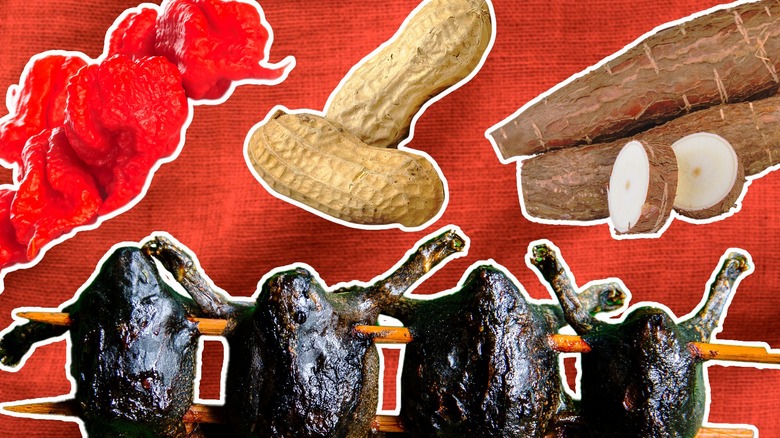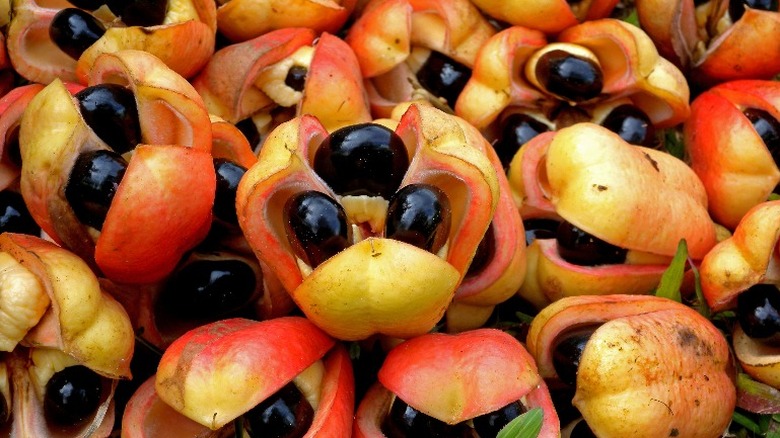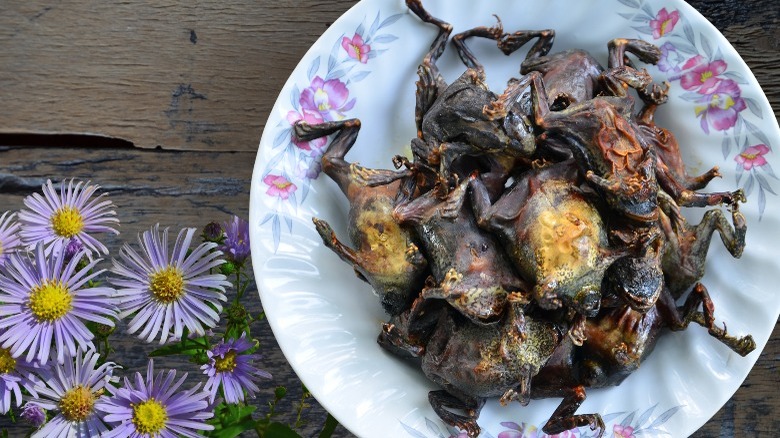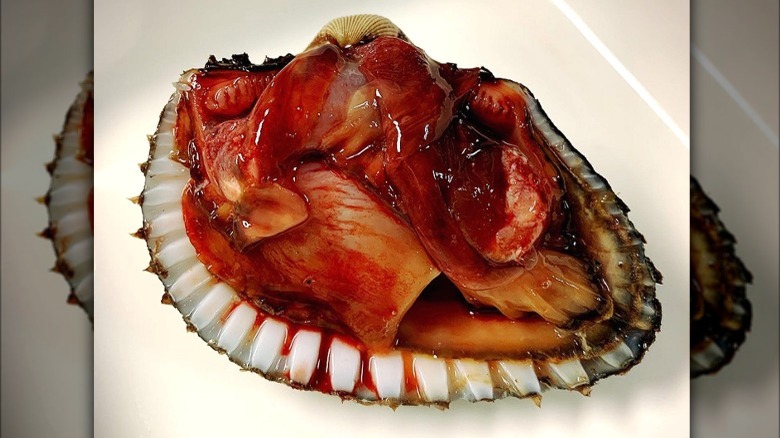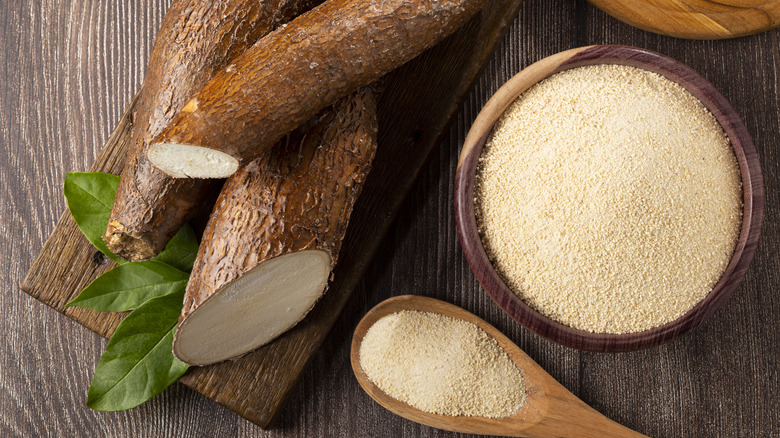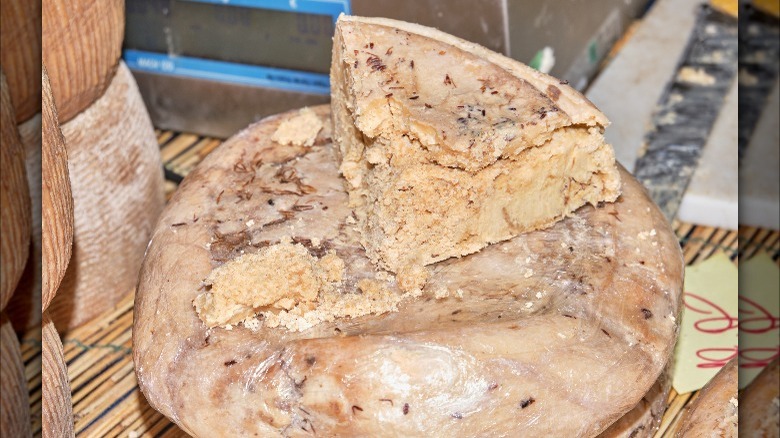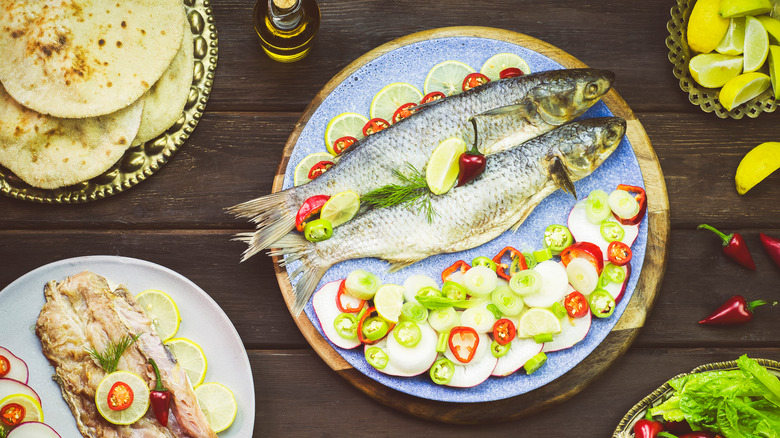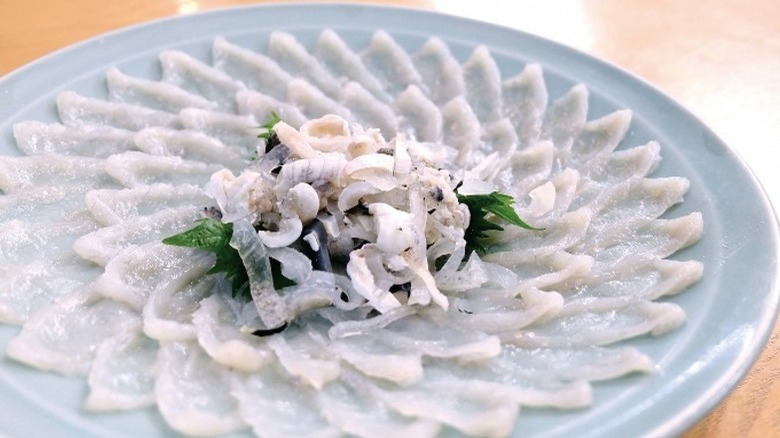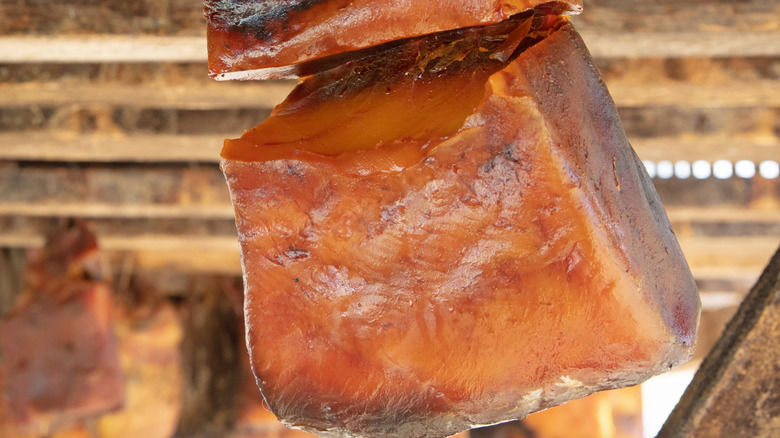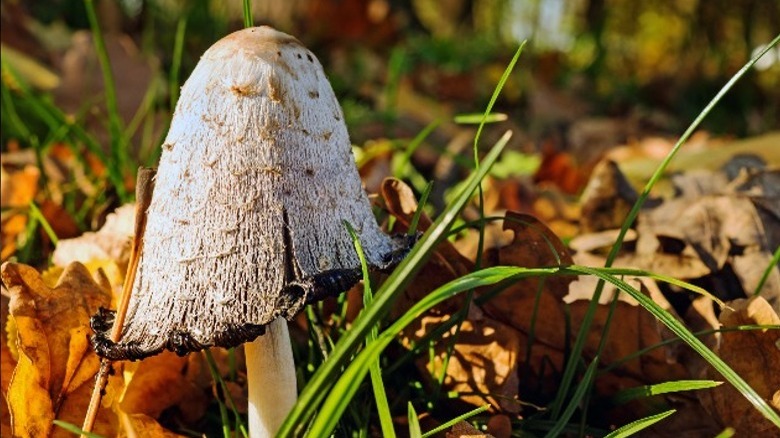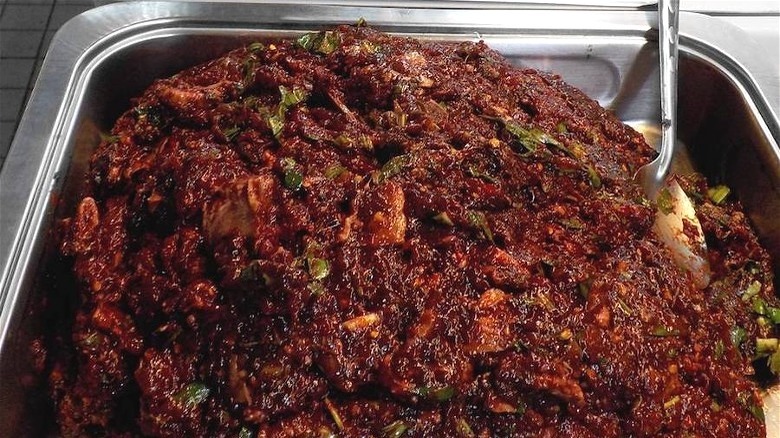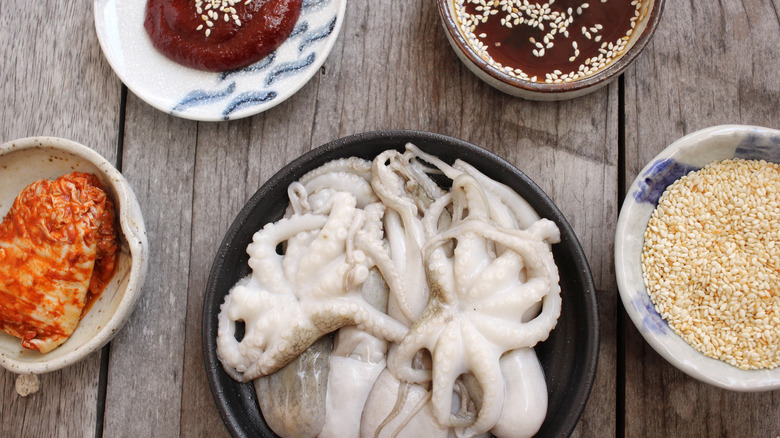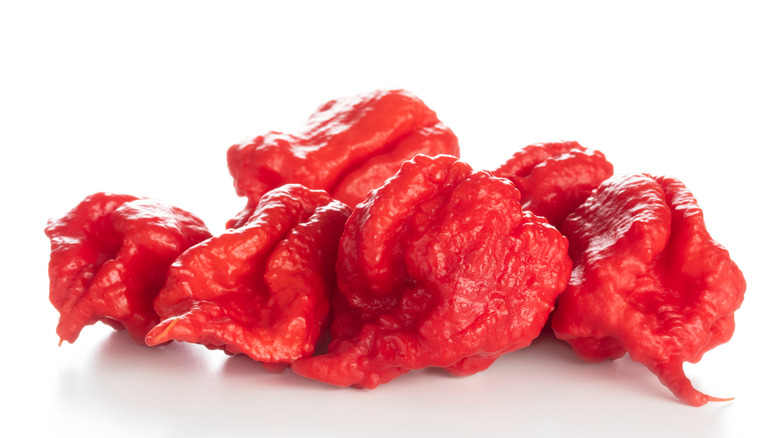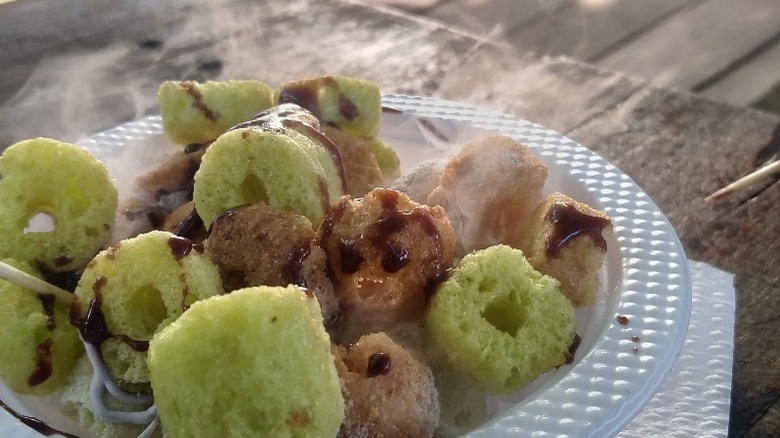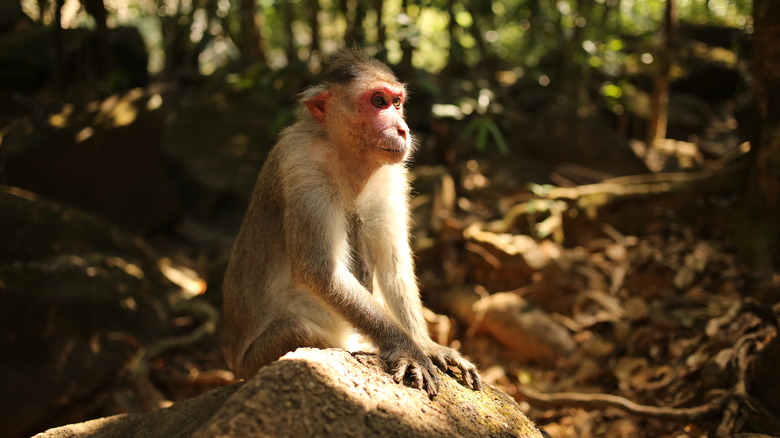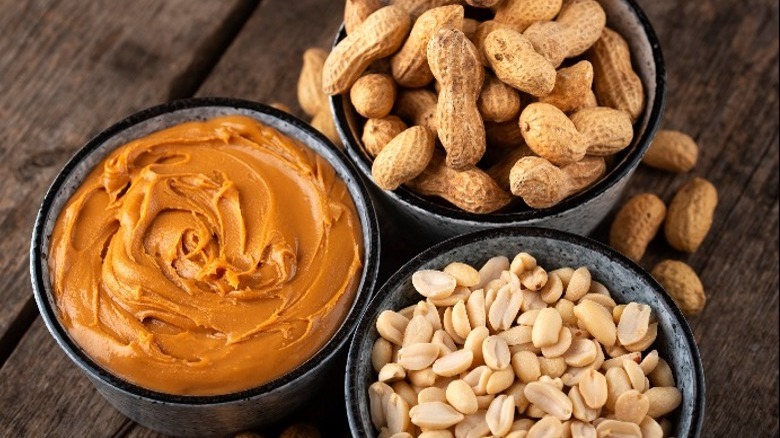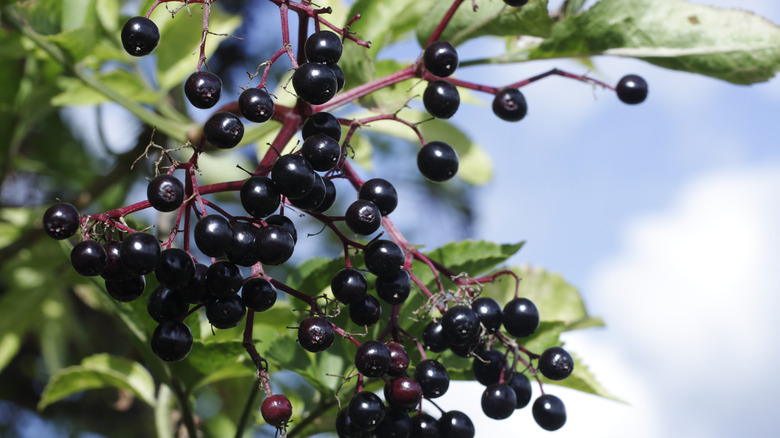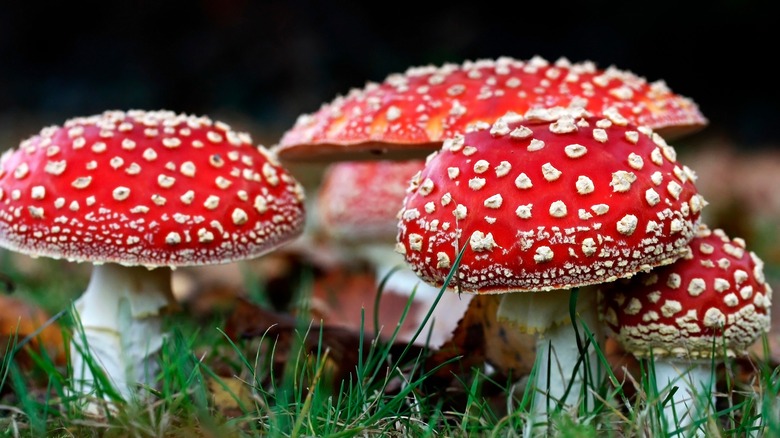The 18 Deadliest And Most Dangerous Foods In The World
Would you consider yourself a daredevil foodie? Would you try any dish you come across? While these questions might sound exciting, it's not always safe to take this adventurous approach to food. Some foods are actually quite dangerous — or even deadly — to consume. Because of this, we encourage you to think twice before digging in.
Foods can be life-threatening for a number of reasons. Sometimes, they may contain toxic chemicals, venom, parasites, or bacteria. Dishes can also be dangerous if they were made through improper cooking methods. But we're not talking about your average food poisoning here. Some of these foods can lead to full-body paralysis if they are eaten.
Yet, many of these meals remain popular. People will risk their lives to enjoy these dangerous foods. So, just what foods are we referring to? Read on to discover 18 of the most dangerous foods in the world.
1. Ackee
Ackee and saltfish is Jamaica's national dish. To make it, ackee and salted cod are sautéed with other ingredients, such as onions, peppers, scallions, and tomatoes.
When prepared correctly, the Jamaican dish is perfectly safe to consume. However, the ingredient in question is ackee, which is also the country's national fruit. Ackee fruit is not native to Jamaica but was likely brought over from Africa during the slave trade. In Jamaican cuisine, it's treated more like a vegetable, appearing in many different savory dishes. But unfortunately, ackee contains the poison hypoglycin, according to The Office of the Prime Minister of Jamaica.
When properly harvested or cooked, the poison will dissipate. But in the hands of the wrong chef, this dish has been known to cause "Jamaican vomiting sickness," according to a study published in the National Library of Medicine. In addition to being sick to your stomach, the illness could lead to side effects like seizures, comas, and even death.
2. Baked bullfrogs
It's one thing to eat frog legs in France, but have you tried an entire bullfrog? In Namibia, there exists a dish called omafuma, which consists of whole, cooked bullfrogs. The frogs are either baked or barbecued. Unfortunately, this dish can be dangerous to consume.
These large frogs contain toxins within their bodies. Although the poison can be avoided if the dish is cooked right, the consequences of getting it wrong can be intense. If omafuma isn't prepared correctly, eating it can cause kidney failure, according to Face2Face Africa. This side effect of eating the frogs is called "Oshiketakata" by the locals.
3. Blood clams
Blood clams are unique in that they contain a significant amount of hemoglobin, which makes them look very bloody. To some, these clams have an unsightly — and almost gruesome — appearance. According to Anchor & Hope, blood clams are more likely to contain dangerous diseases like hepatitis A, typhoid, and dysentery than other clams. They are even illegal to harvest in California.
These clams were once considered popular in Chinese cuisine. However, the risks associated with eating these clams have been known for a while. In 1988, a widespread hepatitis A epidemic swept Shanghai, according to China.org. The outbreak was traced to blood clams. As a result of this outbreak, over 300,000 individuals were exposed to hepatitis A.
4. Cassava
Cassava root is commonly grown in tropical regions of South America, Southeast Asia, and West Africa. You may be more familiar with this root in its powder form. Cassava flour is commonly used as a wheat substitute in gluten-free products. It's also responsible for the tapioca pearls in boba tea.
In its cooked and processed forms, there's nothing to worry about. However, raw cassava root contains cyanogenic glucosides, which can release a highly toxic chemical called hydrogen cyanide, according to a study published in Medical Toxicology. In Uganda, consumption of cassava flour led to a 2017 outbreak of cyanide poisoning, with 98 suspected cases and two deaths (per the Centers for Disease Control and Prevention).
If you're buying processed cassava products from a reliable retailer — you're in the clear. You can go on enjoying that bubble tea. Plus, there are ways to cook cassava root safely. If you're eating the tubers, the CDC recommends soaking them for at least four to six days before cooking and consuming them.
5. Casu marzu
Casu marzu is a name that translates to "rotten cheese." It doesn't take much imagination to envision what this Sardinian dairy product tastes or smells like. This pungent food is made from a Sardinian cheese called pecorino sardo, plus one crucial ingredient: maggots.
During the maturation process, the cheese is cut open, and the eggs of cheese flies are combined with the cheese. When the larvae hatch, they begin to consume the cheese. Their digestive process accelerates fermentation and creates a delicate, creamy consistency. It's so soft it almost melts, oozing liquid beads known as "lagrimas," or tears.
According to Britannica, the Guinness Book of World Records once deemed it the most dangerous cheese. The organization attributed the danger to the maggots, writing that they: "can survive stomach acid to pass through the intestine walls, causing vomiting, abdominal pain and bloody diarrhea." Luckily, it's banned in most countries, including its country of origin, Italy. But if you must try this rancid cheese, some local Sardinian producers may still sell it under the counter.
6. Fesikh
Fesikh is an Egyptian fish typically consumed for the spring holiday of Sham el-Nessim. The recipe has been passed down through generations. To make the dish, mullet fish is sun-dried, salt-cured, and fermented for weeks at a time. Ingesting this dish carries the risk of botulism, in part because sometimes the fish are not salted enough in order to destroy this toxin.
Botulism is caused by the bacteria Clostridium botulinum, which the USDA refers to as one of the most toxic substances known. It's present in marine sediments and soil, grows in low-oxygen environments, and has been found in canned foods and fermented fish. As a neurotoxin, it can destroy or paralyze nerves. It's one thing to paralyze a limb, but when breathing muscles are affected — it can become life-threatening.
Despite warnings and previous deaths, Egyptians are holding steadfast to their traditions. However, it's encouraged that those who want to eat this dish only buy from reputable suppliers.
7. Fugu sashimi
Sashimi lovers may want to steer clear of fugu. Also called pufferfish or Silverstripe Blaasop, this deadly seafood contains tetrodotoxin in several of its organs — particularly the liver.
This neurotoxin is 1,200 times more poisonous than cyanide. According to a study published in Case Reports in Medicine, tetrodotoxin in pufferfish can cause anything from giddiness and numbness to severe paralysis. It can render you unable to breathe while still maintaining consciousness. It can even kill you.
Now that's one horrifying — and easily avoidable — experience. However, daredevil foodies are still willing to take the risk and even pay big bucks to try fugu sashimi. But although it's considered a luxury food item in Japan, it's only served in restaurants with a qualified fugu handler.
8. Hákarl
Celebrity chef Anthony Bourdain once told The Wall Street Journal that hákarl was "the single worst, most disgusting and terrible tasting thing" he had tried. While it might be an acquired taste, it's the national dish of Iceland. It consists of fermented, dried shark meat from Greenland sharks. It's also potentially toxic.
Because these sharks don't have urinary tracts, everything is filtered through their flesh. This includes waste, toxins, and high levels of urea and trimethylamine oxide, both of which help keep the sharks from freezing in arctic waters. Drying the meat can neutralize these toxins. But if you get a strip of under-dried or poorly prepared shark jerky, you're in for one unpleasant ride.
However, this isn't nearly enough to scare off Icelandics. They've been using the same aging methods since the Viking times, fermenting it underground and then air-drying it. Chefs know a finished product when they smell one. And indeed, it does. If the carcass gives off a rotting, pungent odor, it's prime time to feast on hákarl.
9. Common ink cap mushroom
Shaggy inky cap mushrooms are safe to eat (when they are young) and they make a rich, earthy soup. However, a simple mushroom misidentification can lead to you making a soup with severe side effects.
The common ink cap mushroom might have a smoother appearance than its shaggy cousin, but it has a much rougher effect. If this variety is used by mistake and combined with alcohol, it's a recipe for disaster.
The common ink cap contains coprine, a compound that prevents your body from breaking down alcohol, causing an acetaldehyde build-up in the blood, according to Science Direct. You might initially feel tingling in those fingertips, but it can progress to a rapid heartbeat, vomiting, nausea, and swelling of the hands and face.
10. Laab dib
If you've tried the popular Thai dish larb, you're already somewhat familiar with this potentially dangerous dish. In the United States, this spiced minced meat is stir-fried just before serving to kill off any harmful pathogens. But some traditional chefs in northern Thailand skip the stir-fry, serving a more authentic meal of raw cow meat, bile, and blood. This type of meat can also be substituted for uncooked pork, fish, or duck.
Eating raw meat comes with risks. Suppose this uncooked concoction is not fresh or well-sourced. In that case, it can lead to many food-borne illnesses, from bacterial infections to parasites. According to a study in Infection and Drug Resistance, northern Thailand has high rates of Streptococcus suis, a life-threatening disease often caused by these raw food products.
11. San-nakji
Imagine raw squid tentacles squirming around on your plate. Now imagine putting them straight into your mouth. That's precisely what san-nakji is, a Korean delicacy made from super fresh squid — so fresh, in fact, that the nerve endings are still firing. Many chefs chop off the tentacles and serve them immediately, and some particularly brave diners request the whole octopus raw.
Either way, a little poke from a chopstick will reignite that slithering squid. We recommend coating it in sesame oil and chewing thoroughly because those suction cups put up a fight on the way down. According to Food & Wine, you can die from choking on still-moving seafood.
12. Dragon's Breath pepper
The Dragon's Breath pepper is considered one of the spiciest chiles in the world, ringing in at 2.48 million on the Scoville scale (which measures pepper heat). To put this in perspective, most police pepper sprays sit between 500,000 and 2 million Scoville heat units.
This pepper was developed by Welshman Mike Smith and given the name "Dragon's Breath" as an homage to the Welsh flag. However, it wasn't created for culinary purposes, but medicinal ones, since it's strong enough to numb the skin.
Smith wouldn't recommend eating it, however, explaining to North Wales Live: "It's not been tried orally. I've tried it on the tip of my tongue and it just burned and burned. I spat it out in about 10 seconds." This pepper could send someone into anaphylactic shock. We aren't willing to be the first to test this theory — we'll take their word for it.
13. Dragon's Breath dessert
The Dragon's Breath dessert doesn't have anything to do with the pepper. Instead, they're cereal-esque desserts coated in liquid nitrogen. They emit a vapor-like smoke even when popped into your mouth, hence the name. It's easy to see the candy's allure, and it's no wonder it's gone viral on social media platforms such as TikTok. However, Dragon's Breath should really come with a disclaimer.
While it might be tempting to breathe like a dragon, we'd think twice before trying these trendy treats. According to Wear TV, one 14-year-old was even admitted to the hospital with chemical burns after touching a Dragon's Breath candy. What can it do to your insides under the wrong circumstances? We'd rather not find out.
14. Monkey brains
In some cultures, it was once believed that eating monkey brains would give you wisdom. But doing so is actually more likely to give you a neurodegenerative disorder.
It's thought that eating animal brains increases the chance of contracting prion diseases. These are considered abnormally shaped proteins in the brain, leading to brain-wasting diseases that almost always prove fatal, according to the National Institutes of Health. One such disease is Creutzfeldt-Jakob disease, which can cause psychiatric symptoms and death, according to the CDC.
In "Indiana Jones and the Temple of Doom," you might recall leading man Harrison Ford sitting down to a feast of monkey brains served straight from the skull. Luckily, these monkey brains were simply a prop, according to Screenrant.
15. Peanuts
From Snickers bars to peanut butter sandwiches, people go nuts for peanuts. In fact, in a 2018 Statista survey, peanuts were voted the most widely consumed tree nut worldwide — even though they're technically a legume. Unfortunately, peanuts are also among the most common and deadly food allergies.
As of 2017, almost 2.5% of children had a peanut allergy, and this rate only appears to be rising, according to the American College of Asthma, Allergy, and Immunology. As such, schools are going as far as becoming "nut-free" to protect students with such food issues.
These allergy symptoms can range from mild indigestion to severe anaphylaxis, and an estimated 13 people die from peanut-related anaphylaxis yearly, reports Frontiers in Public Health.
16. Elderberries
If "Into the Wild" taught us anything, it's that you can't eat just any wild berries — and as it turns out, that includes elderberries.
The bark and berries contain cyanogenic glycosides, which in some situations, can cause cyanide poisoning (via Molecules). Luckily, there are no reported cases of this happening from commercially-purchased elderberry products (per Healthline).
However, the CDC describes one notable incident in California. At a religious event in 1983, a group of people ingested wild elderberries. Within 15 minutes of consuming it, the participants began feeling nauseous and began to vomit. Eight people even required airlifting to a nearby hospital for gastrointestinal and neurological symptoms. So to stay safe, we'd stick to store-bought elderberry products.
17. Foraged mushrooms
If you're a fan of foraging, do your research. Up to 100 wild mushroom species in North America are considered lethal. There are roughly 10,000 recognized varieties, so this is a very small percentage. However, according to NPR, scientists estimate that poisonous mushrooms account for 10,000 illnesses and 100 deaths worldwide yearly.
Mushrooms carry different types of toxins that produce different effects. Some toxins cause convulsions and delusions. In contrast, others cause a slowed heart rate and sweating. Consuming the infamous death cap can lead to severe vomiting and deadly diarrhea, according to Western Pennsylvania Mushroom Club. While the death cap has a deceivingly cute appearance, it's easy to identify. However, not all poisonous mushrooms will be as obvious.
18. Hot dogs
Relish those long American hot dogs while you can because, in the past, people have pushed for a complete redesign. According to NPR, the American Academy of Pediatrics claimed the shape of hot dogs was dangerous to children, due to their ability to be a choking hazard.
The organization isn't entirely off-base. According to Johns Hopkins Medicine, hot dogs are a leading cause of choking among children under the age of three. However, these attempts at change proved to be a flop because these sausages are still long and cylindrical like we like them. The shape of hot dogs doesn't appear to be changing anytime soon.
If you're worried about choking on hot dogs, exercise some much-needed common sense. Eat slowly, and if you're feeding them to young children, cut them into small bites.
